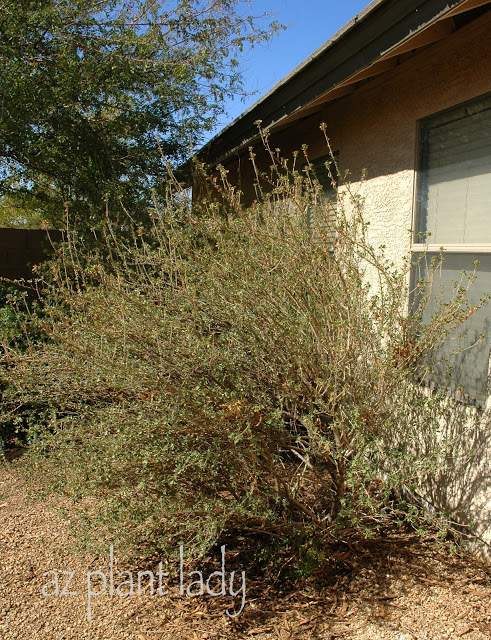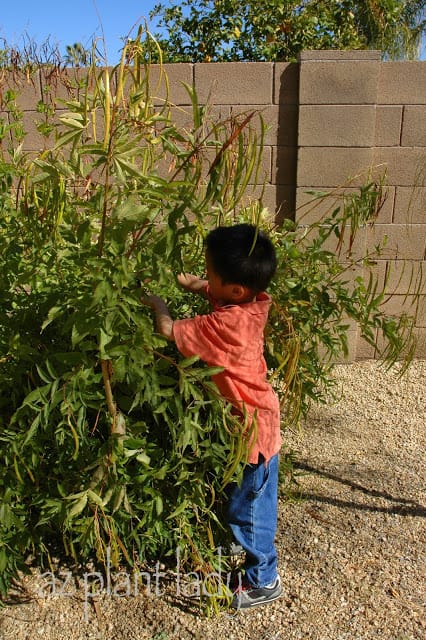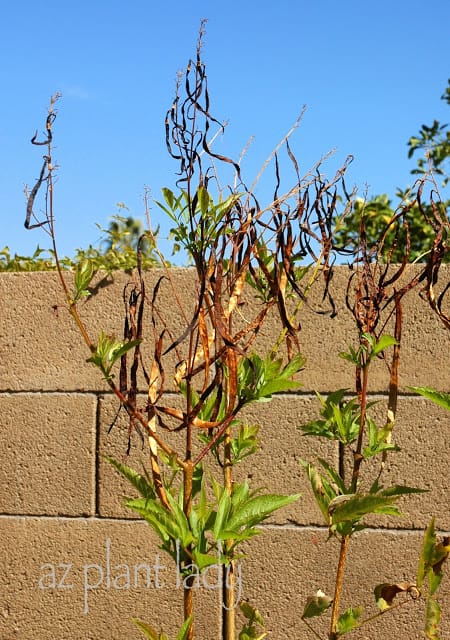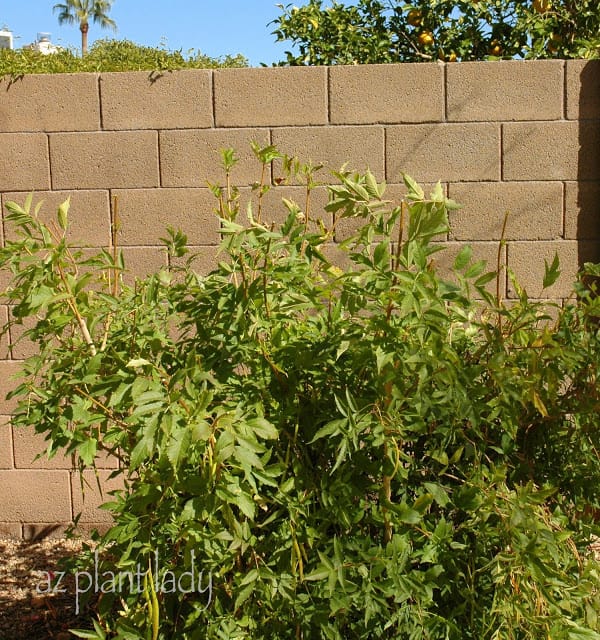I didn’t post a blog on Friday, but I had a very good excuse…

Frost-damaged Bougainvillea
It was time for my springtime annual pruning.
In my zone 9a garden, we do experience temperatures below freezing and as a result, some of my frost-tender plants always suffer some frost damage.
The best time to do this is once the danger of frost is over, which in my area is approximately March 1st.

Arizona Yellow Bells with frost damage.
I really don’t mind, because they look beautiful 9 months out of the year.

‘Rio Bravo’ Sage needing a trim.
This past Friday, I had no consults, the kids were at school and I wasn’t scheduled to babysit my granddaughter.
So, I put on my old gardening clothes, boots and gloves and headed out into my back garden.

Tobey came out to supervise.
My Bermuda grass is still dormant, but once nighttime temperatures stay above 55 degrees, it will start to green up fast.
It was a beautiful, sunny day, in the upper sixties. I started first on my Orange Jubilee shrub and then moved on to my ‘Rio Bravo’ Texas Sage shrubs.

Annual pruning
Every 2 – 3 years, I prune back my ‘Rio Bravo’ severely, which rejuvenates them. Old wood doesn’t produce as much leaves or flowers and eventually dies. Severe renewal pruning stimulates new growth and helps keep your shrubs from becoming too large.
To say that I am a bit passionate about pruning flowering shrubs the right way, is an understatement.
You can read more if you like in my previous post….
Shrubs Aren’t Meant To Be Cupcakes
I spent three hours pruning 10 large shrubs. It was so nice to experience the outdoors with nothing to listen to except for the breeze and the birds.
There is something so satisfying about surveying how much work you have accomplished after you have finished pruning.
Of course, after I finished, I went inside and took 2 ibuprofen for my sore back.
I think I will let my husband put my pruned branches in the trash can 😉
How about you? Are you ready to prune yet?




















